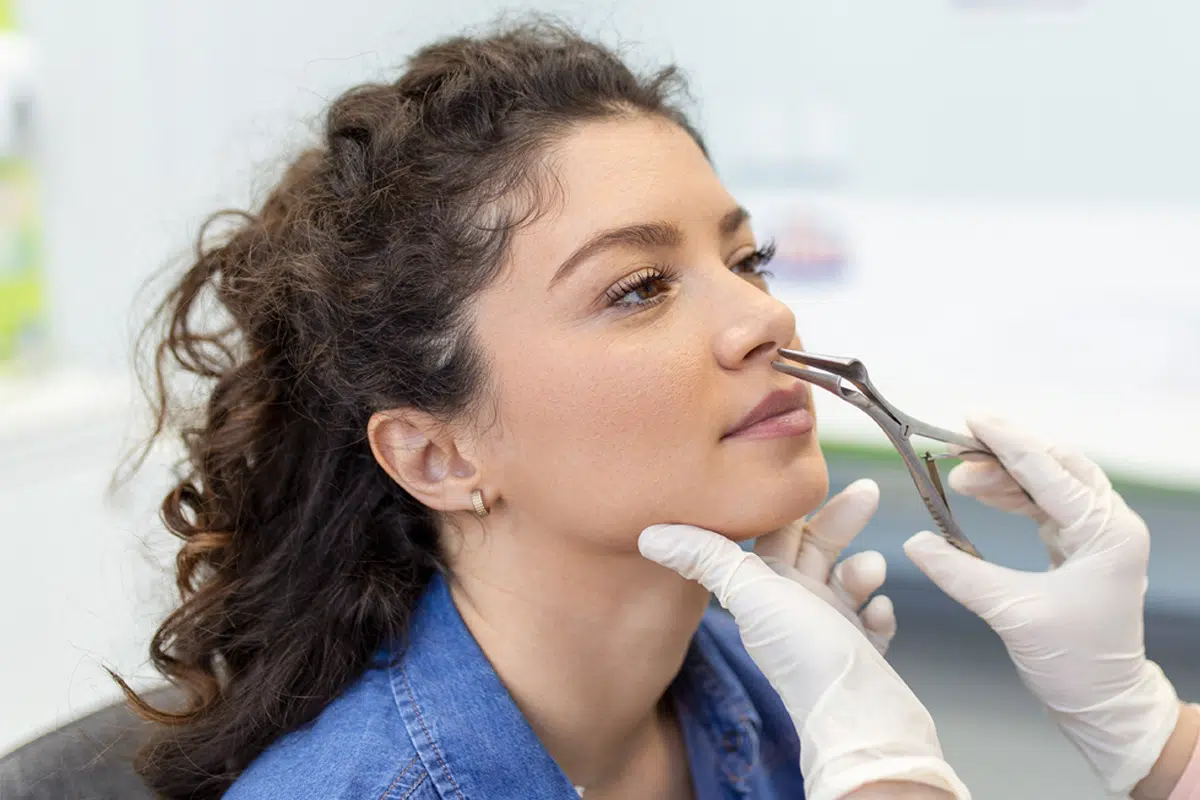Sinusitis can cause facial pain, nasal congestion, and other symptoms that negatively impact one’s quality of life. Thankfully, advancements in medical technology have led to innovative and effective sinus treatment options that provide relief and improve patient outcomes.
The specialists at Penn Medicine Becker ENT & Allergy are dedicated to meeting patients’ needs regarding sinus treatment. In this article, we will explore the benefits of advanced technology for sinus treatment, how it enhances treatment outcomes, and the latest technologies available for managing sinusitis.

The Benefits of Advanced Technology for Sinus Treatment
The use of advanced technology in sinus treatment offers numerous benefits to both patients and healthcare providers, including:
- Improved accuracy
- Minimally invasive procedures
- Enhanced patient comfort
- Better long-term outcomes
How Advanced Technology Enhances Sinus Treatment Outcomes
Advanced technology plays a crucial role in enhancing sinus treatment outcomes by providing physicians with the tools and techniques necessary to address the root causes of sinusitis effectively. These are some ways in which advanced technology improves treatment outcomes:
Precise diagnosis: Advanced diagnostic tools, such as computed tomography (CT) scans and nasal endoscopy, enable physicians to identify the specific factors contributing to sinus symptoms, allowing for more targeted treatment.
Customized treatment plans: With a better understanding of the underlying causes of sinusitis, physicians can develop personalized treatment plans that address the unique needs of each patient.
Reduced risk of complications: Minimally invasive surgery techniques minimize the risk of complications, such as infection or bleeding, leading to better overall outcomes for patients.
Faster recovery times: The new sinusitis treatment technology often results in shorter recovery times, allowing patients to return to their normal activities more quickly.
Understanding the Latest Technologies in Sinus Treatment
Several innovative technologies have emerged in recent years that are revolutionizing the way sinusitis is treated. For example:
Endoscopic sinus surgery: This minimally invasive procedure uses a small, flexible endoscope with a camera and light source to visualize the nasal passages and sinuses, allowing for precise removal of obstructions and improved sinus drainage.
Balloon sinuplasty: A less invasive alternative to traditional sinus surgery, balloon sinuplasty involves the insertion of a small, flexible balloon catheter into the affected sinus cavity. The balloon is then inflated to gently restructure and widen the sinus opening, promoting proper drainage and relieving symptoms.
Image-guided surgery: This surgical technique uses real-time imaging, such as CT scans or MRI, to guide the surgeon during sinus procedures, enhancing precision and improving patient outcomes.
Radiofrequency ablation: This least intrusive procedure uses radiofrequency energy to shrink swollen nasal tissues, improving airflow and relieving sinusitis symptoms.
By staying informed about the latest advancements in sinus treatment technology, patients and healthcare providers can work together to find the most effective and least invasive treatment options for managing sinusitis.
As medical technology continues to evolve, the future of sinus treatment promises to bring even more innovative solutions for providing relief and improving patient outcomes. Consider setting up an appointment with Penn Medicine Becker ENT & Allergy to explore your options and learn how to manage your sinusitis.
Advantages of Using Advanced Technologies for Treating Sinusitis
The use of advanced technologies in sinus treatment provides several advantages over traditional treatment methods. These advantages include:
- Less invasive procedures
- Improved patient experience
- Greater precision
- Customized treatment plans
Exploring New Techniques for Effective Sinus Relief
As medical technology continues to advance, new techniques are emerging that offer effective sinus relief for patients suffering from sinusitis. Some of these techniques include:
Minimally invasive endoscopic sinus surgery: This procedure uses a small, flexible endoscope with a camera and light source to visualize the nasal passages and sinuses, allowing for precise removal of obstructions and improved sinus drainage.
Balloon sinuplasty: A less invasive alternative to traditional sinus surgery, balloon sinuplasty involves the insertion of a small, flexible balloon catheter into the affected sinus cavity. The balloon is then inflated to gently restructure and widen the sinus opening, promoting proper drainage and relieving symptoms.
In-office radiofrequency ablation: This minimally invasive procedure uses radiofrequency energy to shrink swollen nasal tissues, improving airflow and relieving sinusitis symptoms.
Investigating Minimally Invasive Endoscopic Sinus Surgery
One procedure that has become popular in recent years is Functional endoscopic sinus surgery. Some advantages of sinus endoscopic surgery include:

Less tissue damage: The use of an endoscope allows the surgeon to access the sinuses without making large incisions, resulting in less damage to surrounding tissues.
Faster recovery: Patients typically experience shorter recovery times following endoscopic sinus surgery compared to traditional sinus surgery.
Reduced risk of complications: The minimally invasive nature of endoscopic sinus surgery lowers the risk of complications such as infection and bleeding.
Improved patient outcomes: Endoscopic sinus surgery often leads to better long-term outcomes, as it allows for more precise treatment of the underlying causes of sinusitis.
Examining Balloon Sinuplasty for the Treatment of Chronic Sinusitis
Balloon sinuplasty is a relatively new technique that has gained popularity as it gives patients long-term relief while avoiding a lengthy recovery period. These steps are often taken under local anesthesia:
- Insertion of the balloon catheter: A small, flexible balloon catheter is inserted into the affected sinus cavity through the nostril.
- Inflation of the balloon: Once in place, the balloon is inflated to gently restructure and widen the sinus opening.
- Sinus drainage: With the sinus opening widened, proper drainage is restored, relieving sinus pressure and other related symptoms.
- Removal of the balloon catheter: The balloon is deflated and the catheter is removed from the sinus cavity.
Assessing the Benefits of In-Office Radiofrequency Ablation for Rhinology Patients
In-office radiofrequency ablation is a minimally invasive procedure that uses radiofrequency energy to shrink swollen nasal tissues, improving airflow and relieving sinusitis symptoms. Some benefits of in-office radiofrequency ablation for rhinology patients include:
Outpatient procedure: Radiofrequency ablation can be performed in a doctor’s office, eliminating the need for hospitalization and reducing overall treatment costs.
Minimal discomfort: The procedure causes minimal discomfort, and patients can typically return to their normal activities immediately following treatment.
Quick symptom relief: Many patients experience significant symptom relief within days of the procedure.
Low risk of complications: The minimally invasive nature of radiofrequency ablation reduces the risk of complications, such as infection or bleeding.
Evaluating Image-Guided Surgery to Enhance Precision and Safety in Sinus Treatments
Image-guided surgery is an advanced surgical technique that uses real-time imaging, such as CT scans or MRI, to guide the surgeon during sinus procedures. This technology offers several advantages over traditional surgical methods:
Greater accuracy: Image-guided surgery allows for more precise identification and treatment of the underlying causes of sinusitis, improving patient outcomes.
Reduced risk of complications: By providing a clear view of the surgical area, image-guided surgery helps to minimize the risk of damage to surrounding structures, such as blood vessels and nerves.
Shorter procedure times: The use of real-time imaging can help to streamline the surgical process, resulting in shorter procedure times for patients.
Improved patient safety: Image-guided surgery enhances the overall safety of sinus treatments by providing the surgeon with a clear view of the surgical area and reducing the risk of complications.

Understanding the Latest Laser Technologies Available for Sinus Pain Relief
Laser technology has emerged as a promising treatment option for patients suffering from sinus pain. Some of the latest laser technologies available for sinus pain relief include:
Photodynamic therapy: This innovative treatment uses a photosensitizing agent and a specific wavelength of light to target and destroy bacteria and fungi responsible for sinusitis.
Low-level laser therapy: This non-invasive treatment involves the application of low-level laser light to the affected sinus areas, promoting tissue repair and reducing inflammation.
Laser-assisted uvulopalatoplasty: This surgical procedure uses a laser to reshape the soft palate and uvula, improving airflow and reducing sinusitis symptoms.
These cutting-edge laser technologies offer a range of benefits, including reduced pain and inflammation, faster recovery times, and improved treatment outcomes for patients suffering from sinus pain.
Consult with an Expert!
If you suffer from sinusitis, don’t wait any longer to seek relief. Come visit Becker ENT & Allergy today to experience the future of sinus treatment with advanced technologies. Our team of specialists is trained in a variety of procedures and cutting-edge treatments that can help manage your symptoms and get you back to feeling your best. Schedule an appointment today and start taking control of your sinus health!

